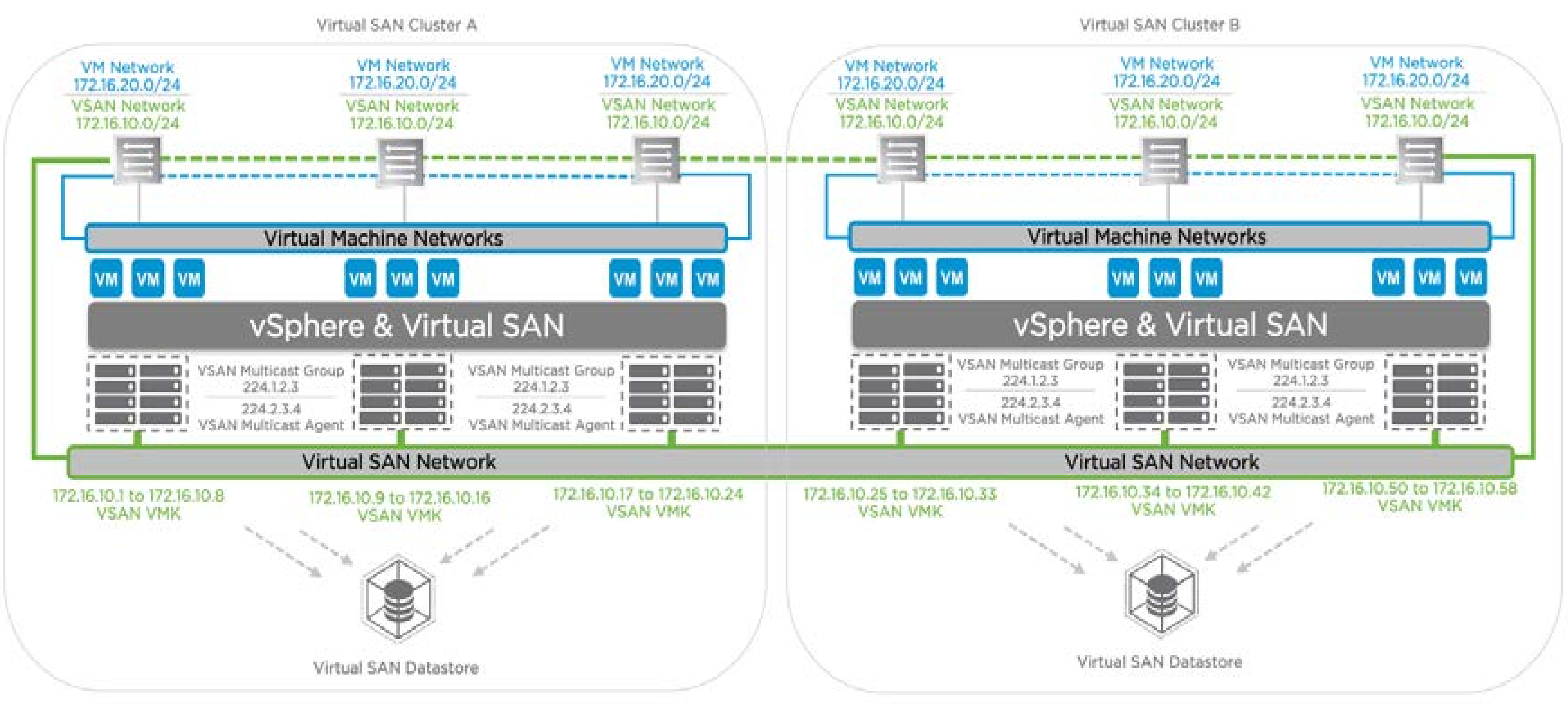VMware Virtual SAN is a distributed object storage platform that depends on IP Network connectivity to provide access to storage resources and storage management infrastructure services. Virtual SAN requires that all of the participating hosts can communicate over an IP network and are members of the same vSphere Cluster.
The locally attached storage devices from all of the hosts are pooled and presented as a single datastore to all members of the cluster once they have established IP connectivity and can communicate on the same Ethernet Layer 2 domain.

Virtual SAN clusters can also be formed with hosts that are connected to different Layer 3 network segments. The network Layer 3 segments must first be configured with IP Multicast in order to make all segments reachable by all the members of the cluster. Although the Virtual SAN network traffic and Virtual Machine traffic can coexist on the same networks, this paper will not cover the configuration semantics and tuning of Virtual Machine network traffic.
The focus of this paper is based on the physical network and vSphere related technologies that are required to deploy Virtual SAN across Layer 2 and Layer 3 topologies. This paper will help virtualization, network, and storage implementation engineers, administrators, and architects interested in deploying Virtual SAN on Layer 2 and across Layer 3 network topologies



